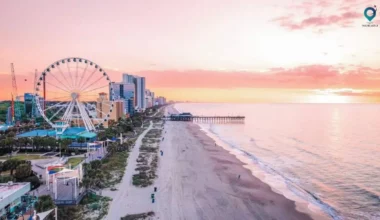When to See the Northern Lights in Norway

About Norway: An Overview
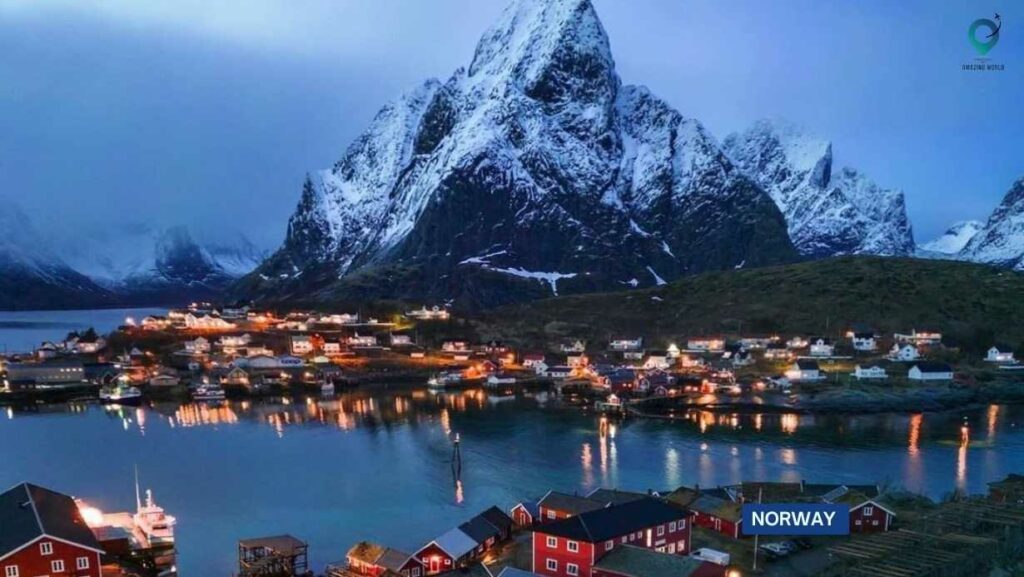
Norway is a country located in Northern Europe on the western part of the Scandinavian Peninsula. It is known for its stunning natural beauty, lively cities, and rich cultural heritage. The country has a diverse landscape, including majestic fjords, towering mountains, and pristine coastlines, making it a paradise for nature enthusiasts and adventure seekers.
Norway has unique attractions such as the iconic Geirangerfjord, a UNESCO World Heritage site with cascading waterfalls, and the enchanting Lofoten Islands, where picturesque fishing villages nestle against a backdrop of dramatic mountains.
Cities such as Bergen and Oslo offer visitors a glimpse into Norway’s dynamic cultural scene, blending modernity with history. The northern reaches of Norway, including Tromsø and Svalbard, provide a front-row seat to the mesmerizing Northern Lights during winter and the midnight sun in summer in Norway. Norway’s commitment to preserving its natural wonders is evident in places like Jotunheimen National Park and Hardangervidda, Europe’s largest mountain plateau.
Whether you’re exploring charming towns, embarking on scenic drives like the Atlantic Road, or immersing yourself in the country’s musical history at Troldhaugen, Norway stands as a destination that seamlessly integrates outdoor adventure with cultural richness.
“If you are looking for the best hotel and flight deals for your next vacation, then we recommend booking your bundled flight and hotel through hotwire.com.“
When to visit Norway | Seasons-by-Seasons Guide

1. Spring (March to May):
- Weather: Spring marks the awakening of nature with milder temperatures ranging from 5°C to 15°C (41°F to 59°F).
- Scenery: The landscapes come to life with blossoming flowers, melting snow, and vibrant greenery.
- Activities: Ideal for hiking and witnessing the transition from winter to spring. Coastal areas are particularly picturesque.
2. Summer (June to August):
- Weather: Summer is the warmest season, with temperatures ranging from 15°C to 25°C (59°F to 77°F).
- Scenery: The fjords, mountains, and coastal areas are at their most stunning, and days are long with the phenomenon of the midnight sun in the far north.
- Activities: Perfect for outdoor activities such as hiking, biking, fishing, and exploring the coastal regions.
3. Autumn (September to November):
- Weather: Temperatures start to cool down, ranging from 5°C to 15°C (41°F to 59°F). Rainfall increases.
- Scenery: Autumn foliage paints the landscapes in hues of red, orange, and yellow, creating a picturesque setting.
- Activities: Great for experiencing the fall colors, hiking, and enjoying cultural events.
4. Winter (December to February):
- Weather: Winter brings cold temperatures, ranging from -5°C to 5°C (23°F to 41°F) in southern areas and even colder in the north. Snow is common.
- Scenery: The country transforms into a winter wonderland, especially in the northern regions where the Northern Lights are visible.
- Activities: Ideal for winter sports like skiing and snowboarding. Tromsø and other northern regions offer opportunities to witness the Northern Lights.
Month-by-month guide for traveling in Norway for a Best Travel experience
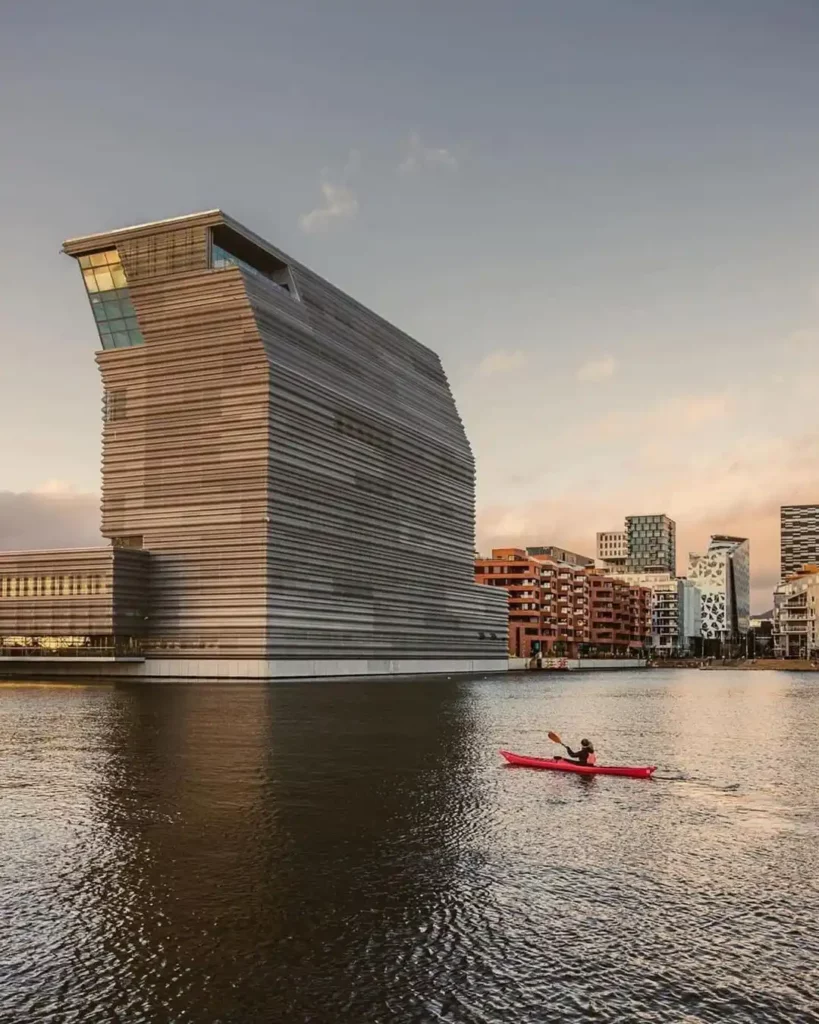

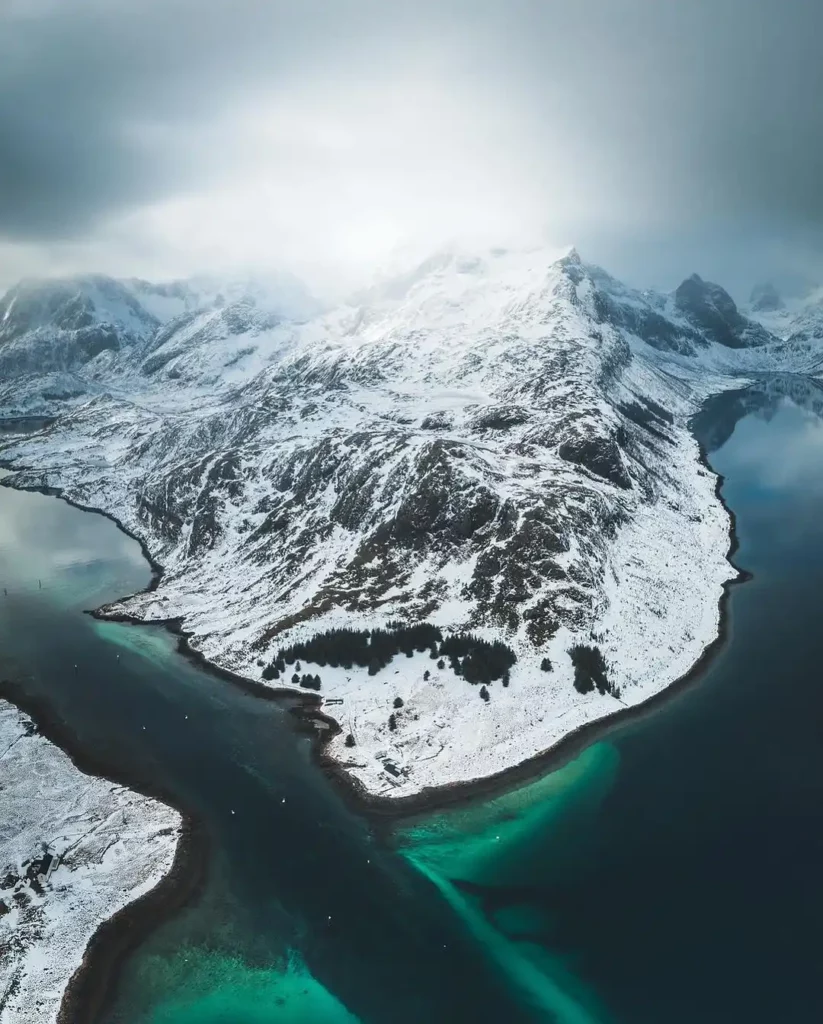
January
Why Choose January for a Visit?
January is a unique time to visit Norway, offering a winter wonderland experience with a mix of snow-covered landscapes and cultural festivities. Traveling in January provides the opportunity to witness the stunning Northern Lights in the northern regions, especially in places like Tromsø. Additionally, if you enjoy winter sports such as skiing or snowboarding, Norway’s renowned ski resorts are in full swing during this month.
Weather Conditions:
January is winter in Norway, and the weather varies across the country. In the southern regions, temperatures range from -5°C to 5°C (23°F to 41°F), while in the northern areas, it can be much colder. Snowfall is common, creating a picturesque snowy landscape. Coastal areas may experience milder temperatures compared to inland and mountainous regions.
Activities and Things to Do:
- Northern Lights Viewing: Head to the northern regions, like Tromsø, for a chance to witness the mesmerizing Northern Lights dancing across the night sky.
- Winter Sports: Enjoy skiing, snowboarding, and other winter sports at popular ski resorts such as Geilo, Trysil, or Hemsedal.
- Dog Sledding: Experience the thrill of dog sledding in regions with snow cover, providing a unique way to explore the winter wilderness.
- Winter Hiking: Bundle up and explore scenic winter trails, especially in national parks like Jotunheimen or Hardangervidda.
Events and Festivals:
- Winter Festivals: Some regions host winter festivals featuring cultural events, music, and traditional winter activities.
- New Year Celebrations: Kick off the year with New Year’s festivities, especially in major cities like Oslo and Bergen.
Things to Avoid:
- Limited Daylight: January has shorter days, so plan outdoor activities during daylight hours to make the most of your visit.
- Challenging Driving Conditions: Be cautious while driving, especially in regions with heavy snowfall. Check road conditions and be prepared for winter driving.
Traveling in January allows you to experience Norway in its winter splendor, with the chance to engage in exciting winter activities and witness the ethereal beauty of the Northern Lights. However, it’s essential to plan accordingly, considering weather conditions and potential challenges associated with winter travel.
February
Why Choose February for a Visit?
February continues the winter wonder in Norway with snowy landscapes and the possibility of witnessing the Northern Lights in the northern regions. If you’re a winter sports enthusiast, February offers excellent conditions for skiing, snowboarding, and other snowy adventures. The colder temperatures provide a true Nordic winter experience.
Weather Conditions
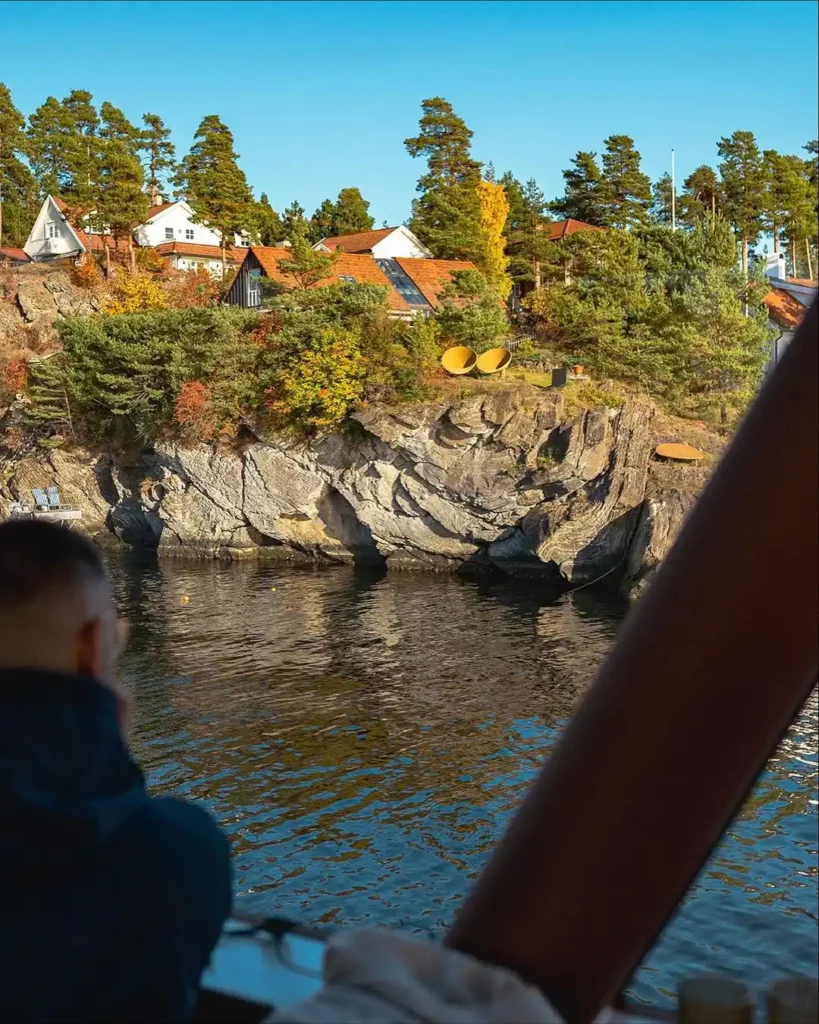

Similar to January, February is a winter month in Norway. Southern regions may experience temperatures between -6°C to 4°C (21°F to 39°F), while northern areas can be colder. Snowfall is common, creating a serene winter atmosphere. Coastal areas may have milder temperatures compared to inland and mountainous regions.
Activities and Things to Do:
- Northern Lights Excursions: Head to Northern Norway, particularly Tromsø or Alta, for guided tours to witness the enchanting Northern Lights.
- Skiing and Snowboarding: Explore Norway’s renowned ski resorts, including Geilo, Trysil, or Hemsedal, and enjoy a variety of winter sports.
- Winter Festivals: Some regions host winter festivals, featuring cultural events, music, and outdoor activities to celebrate the season.
- Ice Fishing: Experience the traditional Nordic activity of ice fishing on frozen lakes, especially in inland regions.
Events and Festivals:
- Samí National Day (February 6th): Celebrate the culture and heritage of the indigenous Samí people, particularly in Northern Norway.
Things to Avoid:
- Winter Driving Challenges: Be aware of potentially challenging driving conditions, especially in areas with heavy snowfall. Check road conditions and use appropriate winter tires.
- Outdoor Activities in Extreme Cold: While February offers winter magic, be prepared for colder temperatures, especially in the northern regions. Dress warmly for outdoor activities.
February is an excellent time to experience Norway’s winter charms, whether you’re seeking the ethereal beauty of the Northern Lights, engaging in winter sports, or immersing yourself in cultural festivities. As with any winter travel, it’s crucial to plan accordingly and be mindful of weather conditions for a safe and enjoyable visit.
March
Why Choose March for a Visit? March in Norway signals the transition from winter to spring, offering a unique blend of snowy landscapes and the promise of milder weather. It’s an ideal time for travelers who want to experience winter activities while anticipating the beauty of spring. March also provides an opportunity to witness the Northern Lights in the northern regions before the arrival of the midnight sun.
Weather Conditions: As winter gives way to spring, temperatures begin to rise, ranging from -4°C to 6°C (25°F to 43°F) in the southern regions. Northern areas may still experience colder temperatures, and snowfall is possible. The days become longer, providing more daylight for exploration.
Activities and Things to Do:
- Winter Sports: Enjoy the last bit of winter sports, including skiing and snowboarding, in popular resorts such as Geilo and Trysil.
- Northern Lights Viewing: Continue to explore the northern regions like Tromsø for a chance to witness the Northern Lights against the dark winter sky.
- Winter Hiking: Take advantage of the lingering snow to enjoy winter hiking trails, especially in national parks like Jotunheimen.
- Fjord Cruises: While some fjords may still be covered in snow, consider taking a fjord cruise to experience the stunning landscapes.
Events and Festivals:
- Birkebeinerrennet (March 19th, 2022): Participate in or witness the famous Birkebeinerrennet, a cross-country ski race from Rena to Lillehammer.
Things to Avoid:
- Melting Snow Hazards: Be cautious of melting snow, which can make pathways slippery. Wear appropriate footwear for wet and icy conditions.
- Variable Weather: March weather can be unpredictable, with a mix of winter and spring conditions. Pack layers and be prepared for variations in temperature.
March provides a unique opportunity to enjoy winter activities while anticipating the arrival of spring in Norway. Whether you’re captivated by the Northern Lights, keen on winter sports, or eager to witness the seasonal transition, March offers a diverse and exciting travel experience.
April
Why Choose April for a Visit?
April marks the onset of spring in Norway, offering a delightful blend of lingering winter landscapes and the emergence of vibrant springtime colors. This transitional month provides a unique experience for travelers seeking milder temperatures and the chance to witness nature awakening from its winter slumber.
Weather Conditions
As spring unfolds, temperatures in April vary, ranging from 2°C to 10°C (36°F to 50°F) in southern regions. Northern areas may still experience cooler temperatures, and snow can persist, especially at higher elevations. Days become longer, providing more daylight for exploration.
Activities and Things to Do:
- Spring Skiing: In higher-altitude areas, ski resorts may still offer skiing opportunities while allowing you to enjoy the warmer weather.
- Cherry Blossom Viewing: Experience the beauty of cherry blossoms, particularly in parks and gardens in cities like Oslo and Bergen.
- Fjord Cruises: Explore the majestic fjords as the winter ice begins to melt, providing a serene and scenic experience.
- Outdoor Cafés and Markets: Enjoy the burgeoning spring atmosphere by visiting outdoor cafés and markets, especially in urban areas.
Events and Festivals:
- Easter Celebrations: Experience Norwegian Easter traditions, including decorated eggs, festive meals, and possibly joining locals for outdoor activities during the long Easter weekend.
Things to Avoid:
- Melting Snow and Mud: Be cautious of melting snow, resulting in muddy conditions on trails and pathways. Wear appropriate footwear.
- Variable Weather: April weather can be unpredictable, so bring layers to accommodate temperature variations. Check the local forecast for your specific destination.
April is a charming time to visit Norway, offering a transitional experience from winter to spring. Whether you’re captivated by the lingering winter landscapes or eager to witness the blossoming of spring, April provides a diverse range of activities and a unique perspective on Norway’s natural beauty.
May
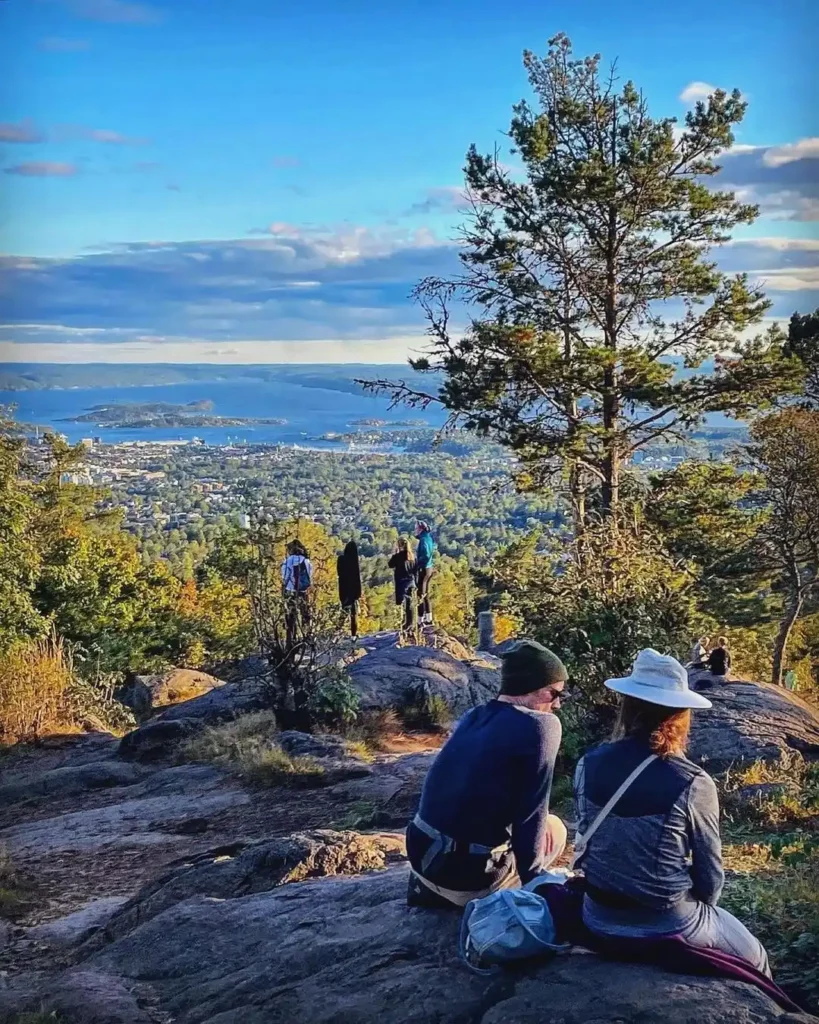

Why Choose May for a Visit?
May is a wonderful time to visit Norway as spring fully takes hold, bringing milder temperatures, blooming landscapes, and extended daylight hours. Travelers in May can experience the beauty of blossoming flowers, explore outdoor attractions, and partake in various cultural events as Norway embraces the warmer season.
Weather Conditions: May marks a shift towards warmer weather, with temperatures ranging from 7°C to 15°C (45°F to 59°F) in southern regions. Northern areas may still be cooler, but the landscapes are vibrant with blossoms, and the days continue to lengthen.
Activities and Things to Do:
- Flower Festivals: Experience the blossoming of spring flowers and possibly attend local flower festivals, celebrating the arrival of warmer weather.
- Hiking and Nature Walks: Take advantage of the pleasant weather to explore hiking trails and nature walks in national parks like Jotunheimen or along the stunning fjords.
- Fjord Cruises: May offers ideal conditions for fjord cruises, allowing you to appreciate the beauty of the Norwegian coast without the winter chill.
- Cultural Events: Attend cultural events, art exhibitions, and music festivals taking place in various cities during the spring season.
Events and Festivals: Constitution Day (May 17th): Join Norwegians in celebrating Constitution Day, marked by parades, traditional costumes, and festive gatherings throughout the country.
Things to Avoid:
- Unpredictable Weather: While May brings milder temperatures, be prepared for occasional rain and variable weather. Pack layers and a waterproof jacket.
- Crowds during National Holidays: May 17th, Constitution Day, is a national holiday, and popular tourist destinations may be busier than usual. Plan accordingly.
May offers a delightful combination of blooming landscapes, cultural festivities, and outdoor activities. Whether you’re interested in enjoying the beauty of spring flowers, participating in local celebrations, or exploring Norway’s natural wonders, May provides an excellent opportunity for a memorable travel experience.
June
Why Choose June for a Visit?
June is a fantastic time to visit Norway, as the country fully embraces the warmth of summer. With longer days, milder temperatures, and a burst of greenery, June offers a diverse range of outdoor activities, cultural events, and the enchanting phenomenon of the midnight sun in the northern regions.
Weather Conditions: June brings pleasant weather to Norway, with temperatures ranging from 10°C to 20°C (50°F to 68°F) in southern regions. Northern areas experience milder temperatures, and the entire country enjoys extended daylight hours, especially in the far north.
Activities and Things to Do:
- Midnight Sun: Experience the mesmerizing midnight sun phenomenon in northern regions like Tromsø, where the sun remains visible throughout the night.
- Fjord Cruises: June is an ideal time for fjord cruises, allowing you to enjoy the stunning landscapes of the fjords in the lingering daylight.
- Hiking and Outdoor Adventures: Explore hiking trails, national parks, and outdoor adventures, taking advantage of the extended daylight hours and pleasant weather.
- Wildlife Watching: June is a great time for wildlife watching, including birdwatching and the chance to spot seals and other marine life along the coast.
Events and Festivals: Midsummer Festivities (June 24th): Join locals in celebrating Midsummer, marked by bonfires, traditional dances, and festivities throughout the country.
Things to Avoid:
- Book Accommodations in Advance: June is a popular travel month, especially for tourists and locals enjoying the start of summer. Ensure you book accommodations in advance, especially in popular destinations.
- Variable Weather: While June generally brings pleasant weather, be prepared for occasional rain. Pack layers and a waterproof jacket for outdoor activities.
June in Norway offers a magical experience with extended daylight hours, vibrant green landscapes, and a plethora of outdoor activities. Whether you’re captivated by the midnight sun, eager to explore the fjords, or interested in cultural celebrations, June provides an optimal balance of summer warmth and natural beauty.
July
Why Choose July for a Visit?
July is an ideal time to visit Norway, offering the peak of summer with mild temperatures, long days, and a vibrant atmosphere. Whether you’re drawn to outdoor adventures, cultural festivals, or the breathtaking beauty of the Norwegian landscapes, July provides an excellent opportunity for a diverse and memorable travel experience.
Weather Conditions: July brings warm and pleasant weather to Norway, with temperatures ranging from 15°C to 25°C (59°F to 77°F) in southern regions. Northern areas also experience milder temperatures, and the entire country enjoys the peak of summer with extended daylight hours.
Activities and Things to Do:
- Fjord Exploration: July is perfect for exploring the majestic fjords through cruises, kayaking, or hiking along the scenic trails that offer breathtaking views.
- Outdoor Adventures: Engage in a variety of outdoor activities, including hiking, biking, fishing, and camping in Norway’s picturesque landscapes.
- Island Hopping: Visit coastal islands like the Lofoten Islands for their stunning scenery, outdoor pursuits, and vibrant cultural scenes.
- Cultural Festivals: Attend cultural festivals and events taking place across the country, featuring music, art, and traditional celebrations.
Events and Festivals: St. Olav Festival (July 29th – August 3rd): Join the festivities in Trondheim, celebrating the medieval heritage and history of Norway’s patron saint.
Things to Avoid:
- Crowded Tourist Destinations: July is a peak tourist season in Norway, and popular destinations may experience higher crowds. Plan your itinerary and book accommodations.
- Sun Protection: With extended daylight hours, remember to use sun protection, especially if engaging in outdoor activities. Pack sunscreen, sunglasses, and a hat.
July offers an optimal combination of warm weather, extended daylight, and a plethora of outdoor and cultural experiences. Whether you’re exploring the iconic fjords, participating in lively festivals, or simply enjoying the natural beauty, July provides an ideal setting for a memorable and diverse Norwegian adventure.
August

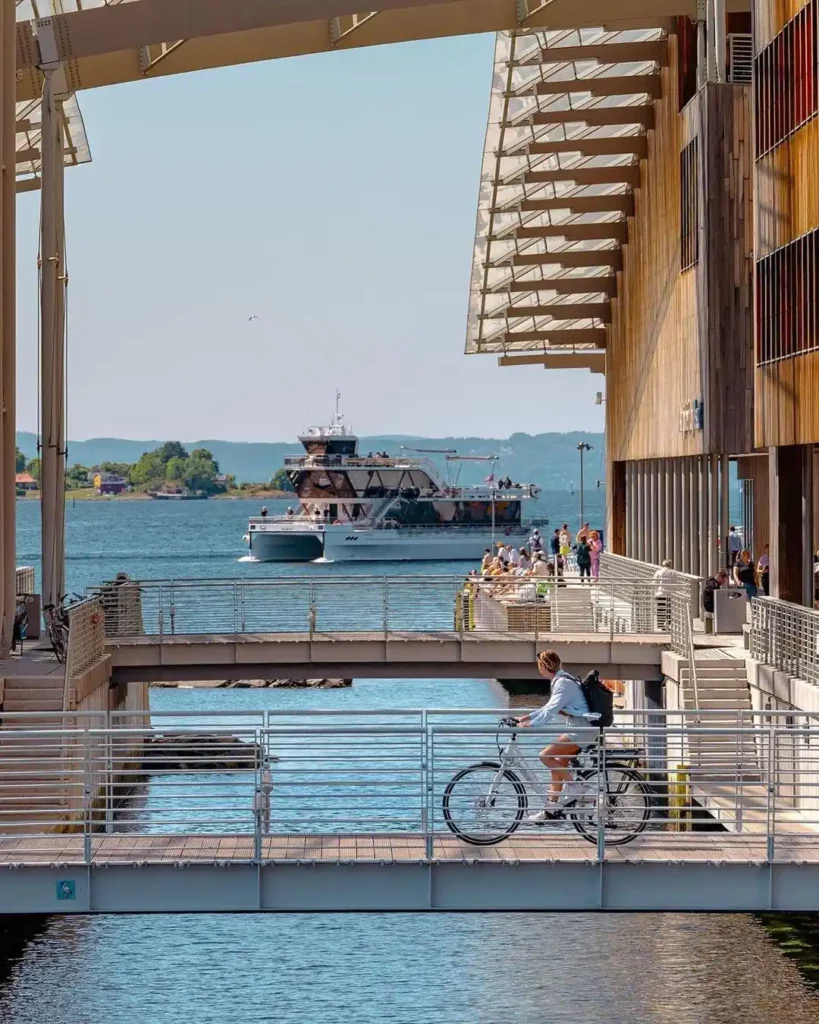
Why Choose August for a Visit?
August marks the tail end of the summer season in Norway, offering pleasant weather, a continuation of long daylight hours, and a variety of outdoor activities. Whether you’re interested in exploring nature, attending cultural events, or enjoying the coastal charm, August provides a delightful setting for a diverse travel experience.
Weather Conditions: August brings mild and comfortable weather to Norway, with temperatures ranging from 12°C to 20°C (54°F to 68°F) in southern regions. Northern areas also enjoy milder temperatures, and the days gradually become shorter as summer transitions to autumn.
Activities and Things to Do:
- Hiking and Nature Exploration: Take advantage of the lingering summer weather to explore hiking trails, national parks, and scenic nature spots.
- Coastal Exploration: Visit Norway’s coastal regions, including the iconic Lofoten Islands, for their stunning landscapes, charming villages, and outdoor activities.
- Cultural Events: Attend cultural events and festivals showcasing Norwegian music, arts, and traditions.
- Wildlife Watching: August is a good time for wildlife watching, particularly in coastal areas where you might spot seals, seabirds, and other marine life.
Events and Festivals: Oyafestivalen (Early August): Enjoy Oslo’s Oyafestivalen, a popular music and arts festival featuring a diverse lineup of international and local artists.
Things to Avoid:
- End of Summer Crowds: While August is slightly less crowded than July, popular tourist destinations may still have a significant number of visitors. Plan accordingly and consider less crowded alternatives.
- Variable Weather: While generally mild, be prepared for occasional rain and variable weather. Pack layers and a waterproof jacket for outdoor activities.
August provides a lovely conclusion to the summer season in Norway, offering a balance of comfortable weather and a range of activities. Whether you’re exploring the outdoors, immersing yourself in cultural festivities, or enjoying coastal adventures, August sets the stage for a memorable and diverse travel experience.
September
Why Choose September for a Visit?
September in Norway offers a transitional period as summer gives way to autumn. This month provides a more serene and less crowded atmosphere, making it an ideal time for travelers who appreciate the beauty of autumn foliage, cultural events, and the gradual shift in seasons.
Weather Conditions: As autumn approaches, temperatures in September start to cool down. In southern regions, temperatures range from 8°C to 16°C (46°F to 61°F), while northern areas may experience cooler temperatures. September brings the chance to witness the stunning autumn colors.
Activities and Things to Do:
- Autumn Foliage Tours: Explore national parks and scenic areas to witness the vibrant colors of autumn foliage, particularly in regions like Jotunheimen.
- Fjord Cruises: Take advantage of the calmer atmosphere to enjoy fjord cruises with a backdrop of autumn landscapes.
- Hiking and Outdoor Adventures: Continue outdoor activities like hiking and nature walks as the landscapes transition to autumn hues.
- Cultural Exploration: Visit museums, galleries, and historical sites to delve into Norway’s rich cultural heritage.
Events and Festivals: Bergen International Film Festival (BIFF): If you’re in Bergen, consider attending BIFF, showcasing a diverse selection of international films.
Things to Avoid:
- Variable Weather: Be prepared for variable weather conditions, including occasional rain. Pack layers and a waterproof jacket for outdoor activities.
- Reduced Daylight Hours: With the gradual shift towards autumn, daylight hours become shorter. Plan outdoor activities during daylight and bring a flashlight if needed.
September offers a peaceful and picturesque time to visit Norway, with the added beauty of autumn colors enhancing the landscapes. Whether you’re captivated by the changing seasons, interested in cultural exploration, or seeking a more tranquil travel experience, September provides a lovely balance before the onset of winter.
October
Why Choose October for a Visit?
October in Norway marks the arrival of autumn, with colorful landscapes, crisp air, and a quieter atmosphere. Travelers who appreciate autumn foliage, cultural experiences, and a more tranquil ambiance will find October to be a charming time to explore Norway.
Weather Conditions: As autumn progresses, temperatures in October cool down. In southern regions, temperatures range from 3°C to 11°C (37°F to 52°F), while northern areas may experience colder conditions. October brings the vivid colors of fall foliage to the landscapes.
Activities and Things to Do:
- Autumn Foliage Tours: Embark on scenic drives or hikes to witness the breathtaking autumn colors in national parks and forested areas.
- Cultural Exploration: Visit museums, art galleries, and historical sites to delve into Norway’s cultural heritage. Cities like Oslo offer a wealth of cultural experiences.
- Northern Lights (Far North): In the northernmost regions, particularly Tromsø, October marks the beginning of the Northern Lights season, offering a chance to witness this natural spectacle.
- Cozy Cafés and Local Cuisine: Embrace the cooler weather by enjoying cozy cafés and exploring local cuisine. Warm up with a cup of coffee or try traditional Norwegian dishes.
Events and Festivals: Oslo International Film Festival: If you’re in Oslo, consider attending the film festival, which showcases a variety of international films.
Things to Avoid:
- Reduced Daylight Hours: October experiences shorter daylight hours, so plan outdoor activities during the daytime and be prepared for earlier sunsets.
- Weather Variability: October weather can be unpredictable, with a mix of sunny days and rain. Pack layers, a waterproof jacket, and be prepared for varying conditions.
October provides a tranquil and scenic backdrop for travelers looking to experience the beauty of autumn in Norway. Whether you’re exploring colorful landscapes, indulging in cultural pursuits, or hoping to catch a glimpse of the Northern Lights, October offers a unique and cozy travel experience.
November
Why Choose November for a Visit?
November in Norway marks the transition from autumn to winter, offering a unique atmosphere with the arrival of snow in some regions. While temperatures cool down, this month presents an opportunity for travelers to experience the beauty of Norway’s landscapes as they transform into a winter wonderland.
Weather Conditions: November brings colder temperatures to Norway. In southern regions, temperatures range from 0°C to 7°C (32°F to 45°F), and northern areas experience even colder conditions. Snowfall becomes more common, especially in the inland and mountainous regions.
Activities and Things to Do:
- Winter Wonderland Exploration: Embrace the arrival of snow and explore the transformed landscapes, whether it’s in city parks or natural areas.
- Northern Lights (Far North): November continues to be a good time for Northern Lights viewing in the northernmost regions, including Tromsø.
- Winter Sports Planning: If you’re a winter sports enthusiast, November is an excellent time to plan for activities like skiing and snowboarding, with some resorts opening for the season.
- Cultural Events and Indoor Activities: Enjoy cultural events, visit museums, and engage in indoor activities as the weather becomes colder. Cities like Oslo offer a range of cultural experiences.
Events and Festivals: Oslo World Music Festival: If you’re in Oslo, consider attending the Oslo World Music Festival, featuring a diverse lineup of international artists.
Things to Avoid:
- Variable Weather Conditions: November can bring a mix of rain, snow, and colder temperatures. Dress warmly, pack accordingly, and be prepared for changing weather.
- Shorter Daylight Hours: With the approach of winter, daylight hours continue to decrease. Plan activities accordingly and be aware of the earlier sunsets.
November offers a unique experience for those who appreciate the charm of winter’s arrival. Whether you’re exploring snow-covered landscapes, witnessing the Northern Lights, or planning for winter sports, November sets the stage for the magical winter season in Norway.
December
Why Choose December for a Visit?
December in Norway brings the enchantment of winter with festive decorations, snowy landscapes, and the possibility of experiencing the magical Northern Lights in the far north. Travelers who enjoy winter activities, holiday festivities, and the cozy ambiance of the season will find December to be a charming time to explore Norway.
Weather Conditions: December is winter in Norway, and temperatures drop further. In southern regions, temperatures range from -4°C to 3°C (25°F to 37°F), and northern areas experience colder conditions. Snowfall is common across the country, transforming the landscapes into a winter wonderland.
Activities and Things to Do:
- Winter Sports: Engage in winter sports like skiing, snowboarding, and sledding. Norway’s ski resorts, including Geilo and Trysil, offer a variety of winter activities.
- Christmas Markets: Experience the festive season by visiting Christmas markets in cities like Oslo and Bergen. Enjoy local crafts, festive treats, and holiday decorations.
- Northern Lights (Far North): December provides opportunities to witness the mesmerizing Northern Lights in the northernmost regions, particularly Tromsø.
- Scenic Winter Drives: Explore scenic winter routes, such as the Atlantic Road, to witness the beauty of snow-covered landscapes and coastal views.
Events and Festivals: St. Lucia Day (December 13th): Experience the cultural celebration of St. Lucia Day, marked by processions, music, and traditional activities.
Things to Avoid:
- Winter Driving Challenges: Be cautious while driving in winter conditions. Check road conditions, use appropriate winter tires, and be prepared for icy roads.
- Limited Daylight Hours: December experiences the shortest days of the year. Plan outdoor activities during daylight and embrace the cozy evenings.
December offers a magical and festive atmosphere in Norway, blending winter activities with holiday celebrations. Whether you’re captivated by snowy landscapes, exploring Christmas markets, or hoping to catch the Northern Lights, December provides a unique and enchanting travel experience.
Things to Do in Norway by Seasons
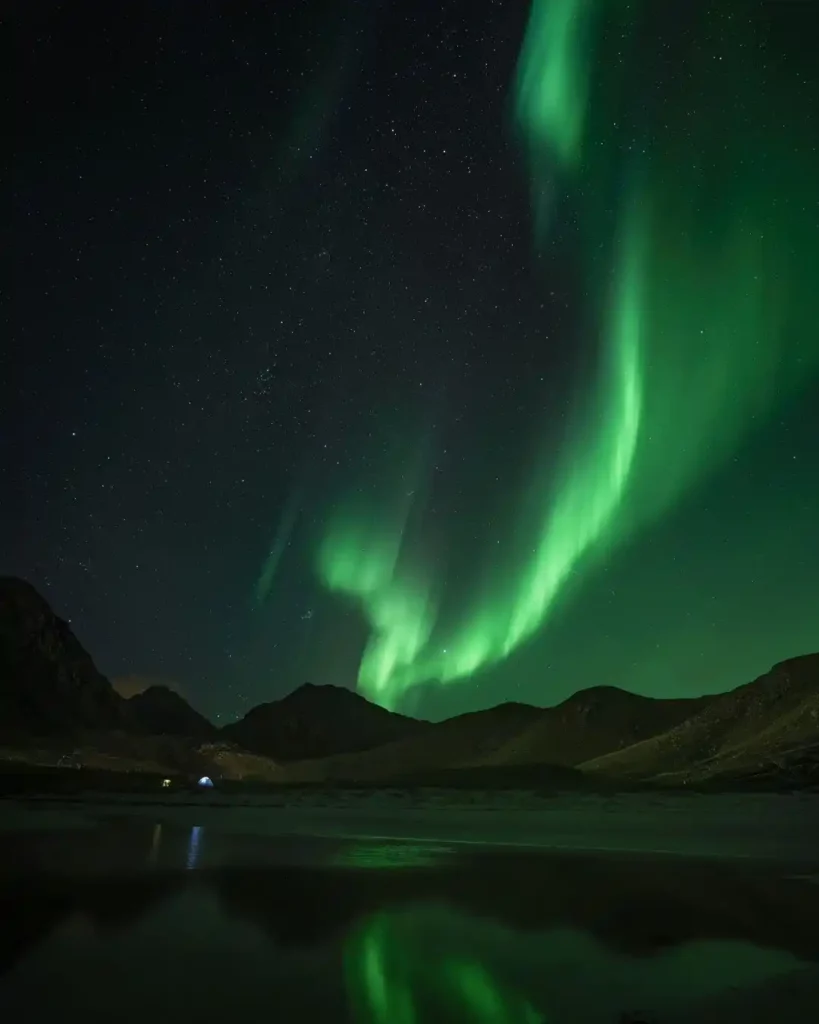

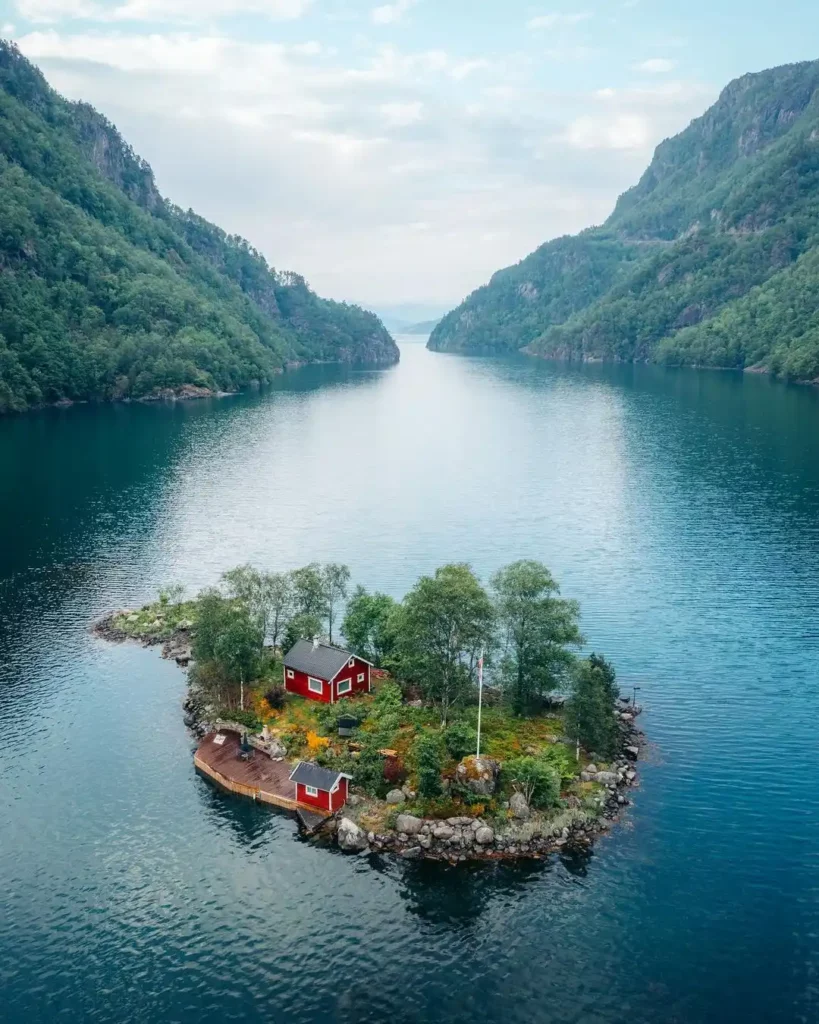
1. Summer: (June to August)
- Fjord Cruises: Explore Norway’s iconic fjords, including Geirangerfjord and Nærøyfjord, through scenic cruises.
- Hiking and Outdoor Activities: Enjoy the extended daylight hours by hiking in national parks like Jotunheimen and Hardangervidda. Engage in outdoor adventures like biking, fishing, and kayaking.
- Midnight Sun: Experience the phenomenon of the midnight sun in the far north, particularly in places like Tromsø.
- Lofoten Islands: Visit the Lofoten Islands for their picturesque landscapes, fishing villages, and outdoor pursuits.
- Cultural Festivals: Attend summer festivals and events, including music festivals and traditional celebrations.
2. Spring: (March to May)
- Cherry Blossom Viewing: Witness the blooming cherry blossoms in parks and gardens, especially in cities like Oslo and Bergen.
- Winter Sports Transition: Engage in late-season winter sports like skiing and snowboarding, especially in higher-altitude areas.
- Fjord Cruises: Experience fjord cruises as the landscapes awaken from winter, offering a mix of snow and blossoming greenery.
- Cultural Events: Attend cultural events and festivals that celebrate the arrival of spring, showcasing music, art, and traditional activities.
3. Winter: (December to February)
- Northern Lights Viewing: Head to the northern regions, particularly Tromsø, to witness the mesmerizing Northern Lights.
- Winter Sports: Enjoy skiing, snowboarding, and other winter sports in renowned resorts like Geilo, Trysil, and Hemsedal.
- Dog Sledding: Experience the thrill of dog sledding in snow-covered landscapes.
- Winter Wonderland Exploration: Explore snow-covered landscapes, engage in snowshoeing, and enjoy the magical winter ambiance.
- Christmas Markets: Visit Christmas markets in cities like Oslo and Bergen for festive treats and holiday decorations.
4. Autumn: (September to November)
- Autumn Foliage Tours: Explore national parks and scenic areas for vibrant autumn foliage, especially in Jotunheimen and Hardangervidda.
- Fjord Cruises: Continue fjord cruises to witness the stunning autumn landscapes along the coast.
- Cultural Exploration: Visit museums, galleries, and historical sites to delve into Norway’s cultural heritage.
- Wildlife Watching: Enjoy wildlife watching, including birdwatching and the chance to spot seals and marine life along the coast.
- Autumn Festivals: Attend autumn festivals featuring music, art, and traditional celebrations.
Each season in Norway offers a distinct and captivating experience, allowing visitors to explore the country’s natural beauty, engage in outdoor activities, and immerse themselves in its rich cultural scene.
Norway’s temperature by month: Average weather, temperature, rain

Below is overview of the average weather, temperature, and rainfall in Norway by month.
Average High and Low Temperature Chart in Norway

Image information taken by- weatherspark.com
Annual weather in Norway (Month on month temperature Charts)

Information taken by weatherspark.com
Unique places to visit in Norway
| Place | Address | Why to Visit |
| Geirangerfjord | Geirangerfjord, 6216 Geiranger, Norway | – UNESCO World Heritage site known for its stunning, narrow fjord surrounded by towering cliffs and waterfalls. – Picturesque landscapes and scenic boat tours. |
| Lofoten Islands | Lofoten, Norway | – Quaint fishing villages with colorful wooden houses. – Majestic mountains, pristine beaches, and opportunities for outdoor activities. |
| Bergen | Bergen, Norway | – Charming Hanseatic wharf, Bryggen, with its historic buildings. – Vibrant cultural scene, museums, and the scenic Fløyen Mountain. |
| Jotunheimen National Park | Jotunheimen, Norway | – Norway’s largest national park with diverse landscapes, including glaciers, mountains, and lakes. – Hiking and mountaineering opportunities, including the highest peak in Norway, Galdhøpiggen. |
| Svalbard | Svalbard, Norway | – Remote Arctic Archipelago with unique wildlife, including polar bears. – Witness the Northern Lights during the winter months. |
| Trolltunga | Odda, Norway | – Dramatic cliff formation offering breathtaking views over Lake Ringedalsvatnet. – A challenging hiking destination for adventure enthusiasts. |
| Tromsø | Tromsø, Norway | – Arctic city known for its vibrant cultural scene. – Excellent location for observing the Northern Lights and experiencing the midnight sun. |
| Ålesund | Ålesund, Norway | – Art Nouveau architecture following a devastating fire in 1904. – Coastal beauty, museums, and seafood. |
| Nærøyfjord | Nærøyfjord, Norway | – UNESCO World Heritage site, known for its narrow and picturesque fjord. – A popular destination for boat cruises and kayaking. |
| Oslo | Oslo, Norway | – Capital city with a mix of modern architecture and historical sites. – Rich cultural institutions, including museums and galleries. |
| Sognefjord | Sognefjord, Norway | – Norway’s longest and deepest fjord with breathtaking scenery. – Activities such as hiking, boat tours, and exploring charming villages. |
| Trollstigen | Trollstigen, 6300 Åndalsnes, Norway | – Famous mountain pass with hairpin bends and panoramic views. – A thrilling drive or a base for exploring nearby waterfalls and hiking trails. |
| Trondheim | Trondheim, Norway | – Historical city with a medieval cathedral and charming old town. – Rich cultural heritage and vibrant atmosphere. |
| Atlantic Road | Atlanterhavsveien, Norway | – Unique road along the Atlantic coastline with bridges and causeways. – Spectacular views and opportunities for fishing. |
| Fantoft Stave Church | Fantoft, 5075 Bergen, Norway | – A reconstructed stave church showcasing traditional Norwegian architecture. – Cultural and historical significance. |
| Hardangervidda | Hardangervidda, Norway | – Europe’s largest mountain plateau with diverse flora and fauna. – Hiking, fishing, and the stunning Vøringsfossen waterfall. |
| Pulpit Rock | Preikestolvegen, 4100 Jørpeland, Norway | – Iconic cliff with a flat top providing panoramic views of Lysefjord. >- A popular hiking destination. |
| Rjukan | Rjukan, Norway | – Unique location with an annual solar mirror to bring sunlight to the town square. – Outdoor activities, including ice climbing and hiking. |
| The Lillehammer Region | Lillehammer, Norway | – Host of the 1994 Winter Olympics, offering winter sports and cultural attractions. – Charming town with well-preserved architecture. |
| Troldhaugen | Troldhaugvegen 65, 5232 Paradis, Norway | – Former home of composer Edvard Grieg, now a museum. – Beautiful surroundings and a glimpse into Grieg’s life. |
| Andøya | Andøya, Norway | – Northern lights and wildlife-watching opportunities. – Scenic landscapes and coastal beauty. |
| Brekkefossen | Brekkefossen, 5713 Voss, Norway | – Stunning waterfall surrounded by nature. – Hiking trails and photography opportunities. |
| Fløibanen Funicular | Vetrlidsallmenningen 21, 5014 Bergen, Norway | – Scenic funicular ride to the top of Mount Fløyen with panoramic views of Bergen. – Hiking trails and a restaurant at the summit. |
Beyond the Seasons: Worst Time to Visit Norway

The worst time to visit Norway largely depends on individual preferences and the type of experience you are seeking. However, there are a few factors to consider that might make certain times less favorable for some travelers:
- Winter (December to February):
- Short Days: December has the shortest days of the year, with limited daylight hours, which may impact outdoor activities.
- Cold Temperatures: Winter temperatures, especially in the northern regions, can be extremely cold, making outdoor exploration challenging for those not accustomed to the cold.
- Late Autumn (November):
- Transition Period: November is a transition month with variable weather. It can be cold, wet, and dark, making it less ideal for outdoor activities.
- Limited Daylight: Days continue to shorten in November, reducing the time available for exploration.
- Early Spring (March to April):
- Variable Weather: Spring is a transitional period, and weather conditions can be unpredictable. You might encounter a mix of rain, snow, and chilly temperatures.
- Limited Outdoor Activities: Some outdoor activities, especially winter sports, may still be winding down, and the landscapes may not yet have the vibrancy of spring.
- Shoulder Seasons (Late Autumn and Early Spring):
- Closed Attractions: Some tourist attractions, accommodations, and services may close or operate on reduced schedules during the shoulder seasons.
- Less Vibrant Scenery: Late autumn may have fewer colorful landscapes, and early spring might not showcase the full bloom of flowers and foliage.
- Peak Tourist Season (June to August):
- Crowds: While summer offers pleasant weather, it is also the peak tourist season, leading to crowded attractions and higher prices for accommodations.
- Popular Destinations: Famous attractions may be busier, and some tourists prefer quieter times for a more serene experience.
It’s essential to consider your preferences and the type of activities you enjoy when planning a visit to Norway. If you prefer avoiding crowds and can tolerate colder temperatures, the late autumn or early spring shoulder seasons might be less crowded. However, if you are interested in outdoor activities and vibrant landscapes, the summer months are popular despite the higher number of tourists. Ultimately, the “worst” time is subjective and varies based on individual preferences and travel goals.
How to Visit Norway
Getting to Norway involves various modes of transportation, and the method you choose depends on your starting point and preferences. Here are the common ways to reach Norway:
- By Air:
- International Flights: Norway has several international airports, including Oslo Airport Gardermoen, Bergen Airport Flesland, and Stavanger Airport Sola. Major airlines operate direct flights to these airports from various cities worldwide.
- Domestic Flights: If you’re already in Europe, you can take advantage of domestic flights to reach Norway’s regional airports.
- By Train:
- European Rail Network: Norway is well-connected to the European rail network. You can take trains from neighboring countries like Sweden and Denmark. The train journey provides scenic views, especially on the Oslo to Bergen route (considered one of the most beautiful train rides in the world).
- By Car:
- Road Network: If you’re traveling from neighboring European countries, you can enter Norway by car. The road network is well-developed, and driving allows you to explore scenic routes and remote areas. Keep in mind that Norway has toll roads, and certain areas may require winter tires during colder months.
- By Bus:
- International Bus Services: Some international bus companies operate routes to Norway from neighboring countries. Buses are a cost-effective option, and you can enjoy the scenery during your journey.
- By Cruise/Ferry:
- Cruise Ships: Norway’s coastal cities are popular stops for cruise ships. You can take a cruise that includes Norwegian ports of call.
- Ferries: Depending on your location, you might consider taking a ferry. Ferries connect Norway to Denmark, Sweden, and Germany.
Popular Attractions and Cultures in Norway


| Location | Attractions and Cultural Highlights |
| Oslo | – Royal Palace – Viking Ship Museum – Munch Museum |
| Bergen | – Bryggen Wharf (UNESCO World Heritage) – Fløibanen Funicular – Fish Market |
| Tromsø | – Arctic Cathedral<br>- Polaria (Arctic experience center) |
| Geirangerfjord | – Geiranger Village<br>- Dalsnibba Viewpoint |
| Lofoten Islands | – Reine (Fishing village)<br>- Outdoor activities (hiking, fishing, kayaking) |
| Trondheim | – Nidaros Cathedral |
| Sami Culture | – Sami People<br>- Juhls’ Silver Gallery (Kautokeino) |
| Coastal Scenic Routes | – Atlantic Road<br>- Trollstigen (Mountain road) |
Conclusion
Norway is a captivating destination offering a harmonious blend of natural wonders, cultural heritage, and outdoor adventures. From the vibrant capital city of Oslo to the picturesque fjords, historic port cities like Bergen, and the enchanting Arctic landscapes of Tromsø, Norway presents a diverse range of attractions.
The country’s rich cultural heritage is evident in landmarks such as the Royal Palace in Oslo, the Bryggen Wharf in Bergen, and the Nidaros Cathedral in Trondheim. Visitors can delve into Norway’s maritime history at the Viking Ship Museum and appreciate the modern architecture of the Arctic Cathedral in Tromsø.
The natural beauty of Norway takes center stage with iconic attractions like the Geirangerfjord, the Lofoten Islands, and scenic coastal routes such as the Atlantic Road and Trollstigen. Outdoor enthusiasts can indulge in a variety of activities, including fjord cruises, hiking, skiing, and experiencing the magic of the Northern Lights in the Arctic regions.
How much did you like Our detailed insider Northern Lights in Norway: All you need to know before Your Visit. Review Also, please share these Blogs with your friends on social media.
Related Post:-
- Northern Lights
- Photographing the Northern Lights
- Northern Lights Adventure
- Northern Lights Travel Experiences
- Best Month to See the Northern
Norway Map Locations
Norway FAQ’s
What are the Peak Tourist Seasons in Norway?
The peak tourist seasons in Norway are during the summer months (June to August) when the weather is mild, and outdoor activities are popular. This period sees a higher influx of tourists.
Is it worth going to Norway?
Absolutely. Norway is renowned for its stunning natural landscapes, including fjords, mountains, and coastal beauty. The country offers a rich cultural experience, outdoor adventures, and a high quality of life.
What is the rainy season in Norway?
Norway doesn't have a distinct rainy season. However, coastal areas experience more precipitation, and rain is relatively evenly distributed throughout the year.
What is Norway known for?
Norway is known for its breathtaking fjords, the Northern Lights, vibrant cities like Oslo and Bergen, outdoor activities including skiing and hiking, rich cultural heritage, and being one of the happiest and most prosperous countries in the world.
What is the best Weather to explore Norway?
The best weather for exploring Norway is during the summer months (June to August) when temperatures are milder, and the days are longer. Late spring and early autumn also provide pleasant conditions.
Are there Specific Festivals or Events during Certain Times of the Year in Norway?
Yes, Norway hosts various festivals and events throughout the year. For example, the St. Olav Festival in Trondheim (July-August), Oyafestivalen in Oslo (August), and the Bergen International Film Festival (October).
What is the most beautiful part of Norway?
Determining the most beautiful part of Norway is subjective, but popular choices include the fjords such as Geirangerfjord, the Lofoten Islands, and scenic coastal routes like the Atlantic Road.
Where should I go for my first time in Norway?
For a first-time visit, consider exploring iconic cities like Oslo and Bergen, experiencing the fjords, and enjoying the natural beauty of places like Geirangerfjord.
What is the number one place to visit in Norway?
It's challenging to pinpoint a single "number one" place, as Norway offers diverse attractions. However, places like Geirangerfjord, Bergen, and the Lofoten Islands are often considered must-visit destinations.

Meet David Hoper, a passionate travel Blog writer with 7+ years of experience in travel content. Through his exemplary storytelling and engaging narratives, he shares his experiences and brings destinations to life. With a keen eye for detail and a love for exploration, he has cultivated a diverse portfolio of travel blogs that inspire and inform readers worldwide.

